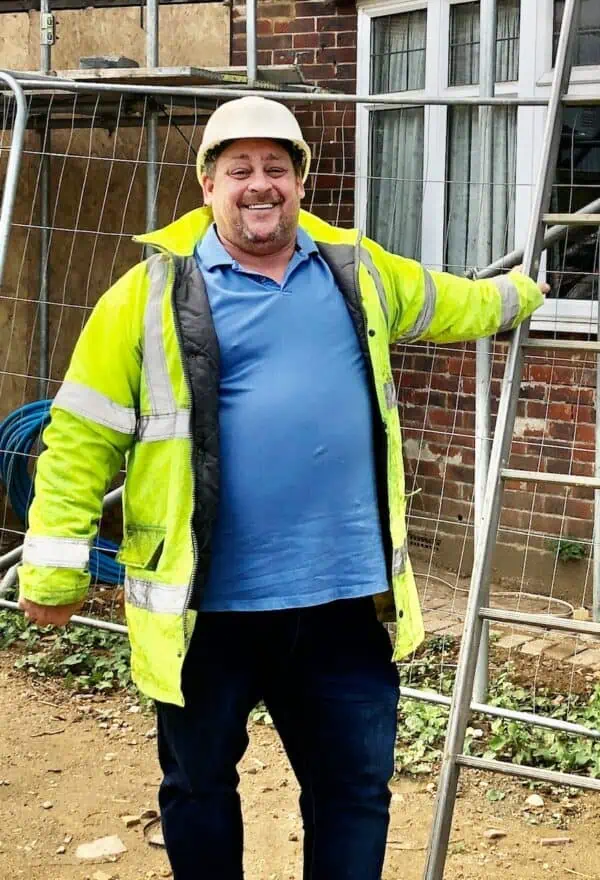
Interview with Austin Davis, Site Manager, on the challenges facing Site Managers
On Friday, the 22nd of September 2023, I had the pleasure of interviewing Austin Davis, who is a site manager and owner of Dreamspace Developments, at one of his large residential construction sites in Epsom.
I was interviewing Austin on the challenges facing site managers today.
Biggest Challenge
I asked Austin what his biggest challenge was that kept him up at night, and what caused him the most stress. His answer was that it was getting trades to turn up on site, and on time.
He often has to shuffle his subcontractors to get someone to be there. He has to borrow subcontractors from his network of site managers, trying to find contractors to get to site, because there is such a shortage of them.
He has currently got an apprentice who is aged 18, the son of one of his builders, so he is trying to bring new builders into the trade, but that is the only young person that he has coming through, because most young people don’t want to work on sites nowadays.
He relies on his good reputation to get contractors and to get customers. He hasn’t had to advertise in all the 19 years that he has been a site manager because he has had such good customer reviews and his previous customers have always recommended him to other people who live in the same area. Sometimes he’s been carrying out one project after the next, in the same street or area for seven years at a time.
He often gets asked to complete jobs, started by other building companies, and his policy is not to finish off half done jobs.
If Austin does work for friends and family he only does it for free, in order to keep relations harmonious.
His next work sites will be in West Street and in the Epsom downs, and he only does the bigger jobs.
Second Biggest Challenge
The second biggest challenge he faces, is that merchant prices have gone up 30 to 40% in the last year and they haven’t come down much. So the builders merchants are making a very large profit.
In fact for the current site that he’s on, the cost of materials went up £28,000 in one year, and Austin chose to absorb that cost for his customers.
His biggest priority is to have the customer happy and satisfied at the end of the job.
For him good quality is the most important part of a job.
His second priority is delivering a project according to the shedule that he promised.
With the current site that he’s working on, in Epsom there was two months of rain and a lot of the 2.5m deep trenches for their foundations collapsed, and this caused delays. They had to have two and a half metre deep foundations due to some small trees being nearby.
He got a structural engineer to redo all of the structural plans of the building at his own cost because the structural engineer that the client had employed, had designed beams that were 450 millimetres deep, which meant that the ceiling heights were too low.
The client’s structural engineer had designed a safety factor of two times what was necessary, plus another 30%.
In Austin’s opinion structural engineers and architects should have to do a year’s training on site.
So they become more practical and realistic in their structural designs.
The structural design of the structural engineer, meant that they would need a 70 tonne crane and truck to deliver the steel beams, and they would ultimately have torn up the road to get there, so they wouldn’t even have been able to receive the steels that size.
Austin got his own structural engineer to redesign the beams, at his own cost. The new design of the beams was 250 millimetres deep, and for that they only needed a 50 tonne truck and crane, and this was able to get to site without tearing up the road.
The cost of the steel’s went down from £7500 each to £2500 each. And that is per steel. The client had the benefit of all these savings.
Austin’s priority is to communicate with the client all the time because there are always changes.
Changes in the future
With regards to building regulations, they haven’t changed much, extra insulation has been required and a lot of the changes have been unnecessary change for changes sake.
The government owns a company called Kingspan which produces Celotex. So there are a lot more specifications that require a specific Celotex from Kingspan.
What has improved is the machines that they use. So for example, the bumping machine for roof tiles and the concrete mixing machines. This means that there is no waste of cement because they can specify exactly how much concrete they need to have made up, and the cement mixers make the correct amount.
Also the cranes are better.
With regards to health and safety. It has really gone overboard due to a blame culture. This means that his roofers have to go onto the roof with big steel toe capped boots, and huge rigger gloves, and hard helmets which restrict their vision.
This actually makes working on the roof at high levels a lot more dangerous, but if they don’t wear it, then the insurance won’t pay out in the event of an accident. There’s a culture of claims and blames.
In order to cope with things like security on site, they have deliveries of materials only when they need them and then they use the materials up quickly.
Sometimes small things get taken which is very annoying.
On one of their sites that had the stainless steel switches and socket plates, they were all stolen.
The thieves took all night removing them and they cut the wiring such that Austin and his team then had to rewire the entire building which cost them 1000s to replace.
In 15 years time …
He said that in 10 to 15 years time once his generation of builders retires there’s not going to be enough builders left because most young lads aren’t interested in working on site and getting their hands dirty.
Most youngsters want to work on computers and earn a lot of money from day one.
I asked Austin about his own property developments.
Austin said it is quite stressful doing his own developments as you have to be prepared to get into a lot of debt. So usually only the big companies can do so.
The construction sector is such a stressful industry to be in, that five of his friends who have been in the building trade, have committed suicide.
Sometimes very large contractors don’t pay out the smaller subcontractors and there can be a tragic price to pay.
Austin has carried out his own property developments. He had one in Red Hill, however he said that you don’t make much of a profit because you have to include affordable housing as part of the development. There’s no choice in that. And then you have to pay 40% tax at the end of the build.
So Austin’s not interested in doing any more developments because there’s not much profit, and it’s not worth the stress.
Austin is really surprised at how cheap materials and labour are up north.
It is about 140 pounds a day for a labour down here in Surrey, depending on the area, and up north it’s about 65 pounds a day.
The property market is very volatile. Unless you have the money to pay for everything yourself, you’ll pay very high interest rates for the loan.
During COVID some people had a bit of a lull but he was working throughout COVID.
He believes another lull is coming in the future due to interest rates going up, the EULEZ costs, utility bills, and taxes, as well as there being a shortage of contractors.
Once the builders stop working, then the economy goes into recession.
Austin feels that the youth today are very entitled and quite mollycoddled because they expect so much.
He himself has been on his own since the age of 14. He had a very tough upbringing where he had to find somewhere to lay his head at night, and he wasn’t given the education that most young children are given today.
Austin describes himself as someone who surrounds himself with other people who are cleverer than him. However, this is obviously not the case, otherwise he wouldn’t be the employer and owner of the construction company.
Austin doesn’t believe that most youngsters have the drive to get what they need because they have been given everything.
Austin believes that you need to go out and get what you want in life.
It was a pleasure interviewing Austin and I hope that I can help him out with marketing for his company (even though he doesn’t need it) and in allowing him to use one of my Sleep pods for his contractors for his sites in future, so that it is easier to get contractors on site, and to get contractors to stay there for longer.
Afterword: Not everyone can find rest and recuperation easily on construction sites and Spodstore.com is in the business of providing a safe space (Sleep pods) for contractors to recuperate in, at construction sites. What are your experiences of finding rest and recuperation (Sleep pods) for contractors? Contact Nicole at admin@Spodstore.com or 07830786315 to discuss solutions or for further information.


